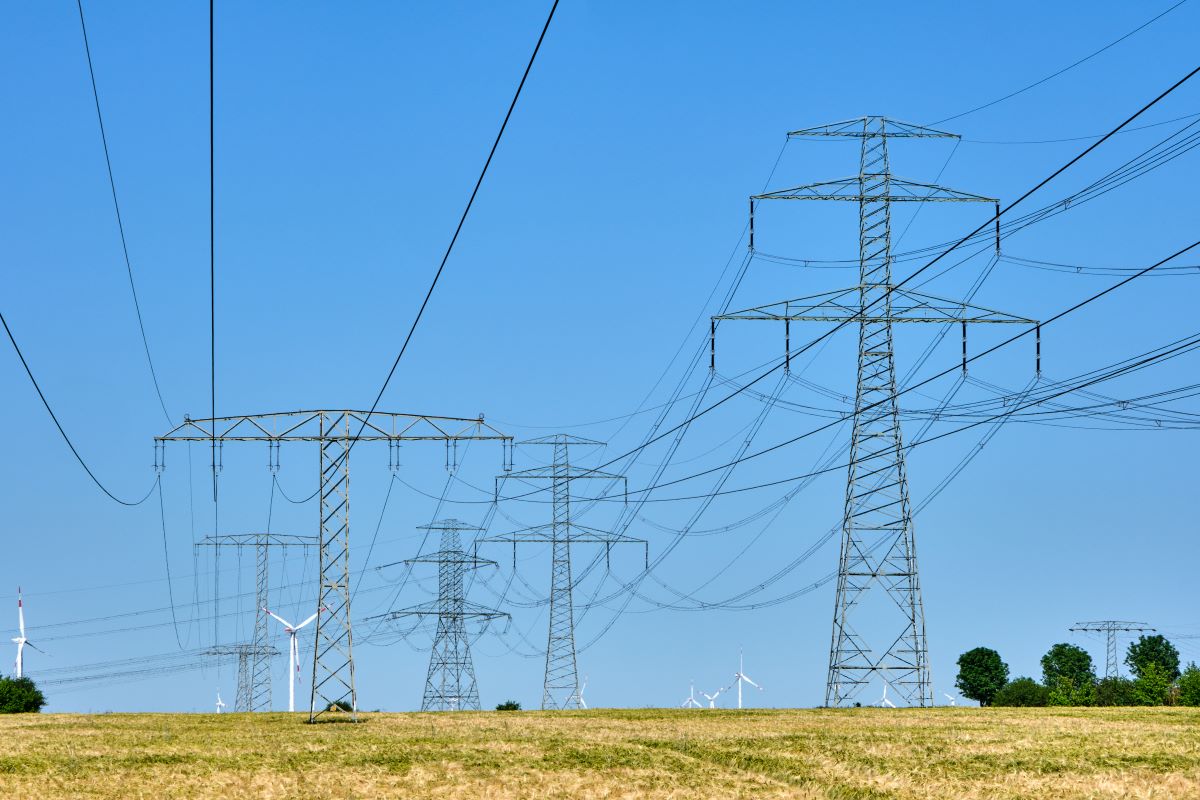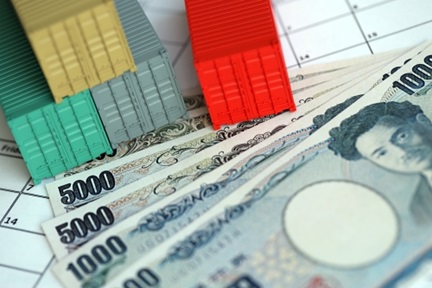Powering Africa for job creation
Why Africa needs to scale-up investments in the energy sector
By Muazu Ibrahim

The Sustainable Development Goal (SDG) 7 commits countries to ensure that people have access to affordable, reliable, and sustainable energy by 2030. Even though Africa is making progress in extending electricity to its population, improvement in access is slow relative to other parts of the world. Recent World Bank data shows that access to electricity in Africa increased from about 52% in 2018 to 53% in 2019 (see figure 1). This suggests that, barely half of people in Africa get electricity. The gap looks even more stark when one looks at sub-Saharan Africa (SSA) independently. Less than half of those who live in SSA have access to electricity relative to over 90% of the population in Asia. Indeed, three out of four people globally with no electricity live in SSA while North Africa has near universal access. Disparity in access is also more pronounced at the locality level where almost 75% of households in urban areas have electricity compared to 25% of rural dwellers.
Recent data suggests that number of people living without electricity in SSA reduced from 860 million to 770 million between 2018 and 2019, thanks to the various energy access policies implemented by successive governments and development partners. Data from the Private Participation Infrastructure (PPI) shows that in 2020 alone the World Bank provided at least US$2.5bn assistance to 17 electricity-related projects (representing 71% of its total projects) in SSA, of which majority directly target new electricity connections.[1]

Five countries in SSA (Democratic Republic of Congo, Ethiopia, Nigeria, Tanzania, and Uganda) together account for almost half the population in the region without electricity. Between 2014 and 2019 some 20 million people in Africa connected to electricity for the first time each year. But now these gains in electrification could potentially be reversed by the lingering effects of the COVID-19 pandemic as the number of people with no access to electricity is set to increase. The International Energy Agency (IEA) estimates that the pandemic pushed about 30 million people in SSA back into energy poverty as they lost their purchasing power to finance their energy sources due to the economic impact of the pandemic.[2] At the national level, a recent publication suggests that the COVID-19 also worsened the fiscal power of governments and energy producers, compelling them to cut back on energy investment plans.[3] This could mean an additional 80 million people to live without electricity by 2030. The erosion of fiscal space means that households and businesses will continue to depend on inefficient and dirty sources for their energy needs leading to pollution. It takes an average of 126 days to get a secure electricity connection in Africa compared with 74 days in East Asia, 67 days in Latin America and only 30 days in Singapore.[4]
With the population of the continent increasing, Africa faces twin challenges – first, how to achieve universal access to electricity and second, how to meet the energy requirement of the future? Indeed, given the changing demographic characteristics in SSA, increasing access to reliable and sustainable clean energy is more important than ever. Affordability remains a critical challenge. Households and businesses are often confronted with the high cost of power across the continent. The Africa Energy Outlook reveals that, paying for electricity to power basic electronic appliances would require the poorest households to commit about 10% of their average income. Such financing commitment is even steeper in a low income economies such as Togo and Mozambique where the poorest households pay at least 15% of their income to finance electricity.[5] High out-of-pocket costs relative to income levels means that electricity consumption rates per household in SSA has stayed low averaging 500 kilowatts (kWh) per capita, compared with 3,400 kWh per capita in East Asia and the Pacific and 8,700 kWh in Singapore.[6] Increasing access to electricity therefore requires a significant improvement in overall income of average households. This partly entails creating sustainable employment opportunities that bring reliable income flows. But what is the dynamic between employment and energy?
The dynamic between employment and energy
There is a strong linkage between energy and employment. First, improvement in the energy sector directly provides energy-related jobs as people get employed to work on the different energy sources. Second, increases in stable energy also offers indirect and induced jobs created from activities resulting from the enabling energy availability. Thus, improvement in energy induces a multiplier impact on job creation and entrepreneurship. For a continent that has the fastest growing labour force in the world, improvement in energy offers several opportunities for jobs creation especially for Africa, where between 10 and 15 million young Africans enter the job market every year.[7] Before the pandemic, Africa was making sustained progress in broadening employment opportunities. There was a slow but steady movement of labour away from the agricultural sector and towards the service sector. As shown in figure 2, employment in the agricultural sector consistently decreased in the past decade from 49.6% in 2010 to 43.7% in 2019 while the employment shares in the service sectors also consistently increased over the same period from 36.7% in 2010 to 42.3% in 2019. Employment in the manufacturing sector, however, remained small and unchanged.

The agricultural sector in Africa is a relatively low energy intensive sector. Recent report of the Africa Energy Outlook shows that while the total energy consumption in the continent is expected to increase by 33% between 2020 and 2030, the agricultural sector is only contributing less than one-tenth and this trend is expected to continue through to 2030.[8] Evidence from the report also suggests that energy consumption is highest in the industrial sector accounting for two-thirds of energy demand in 2020 followed by the services sector where energy dependency is about a quarter of the total energy demand. Indeed, for both the industrial and service sectors, the rise in energy intensity is influenced by the increasing electricity use for lighting, and production of goods and services. Available evidence from Enerdata reveals that the industrial sector (largely driven by mining and refining activities in Zimbabwe, South Africa, Namibia, DR. Congo, Nigeria, Mozambique and Ghana etc) uses majority of the energy generated, accounting for at least 50% of Africa’s energy consumption in the past few decades while the energy use of the agricultural sector continues to decline averaging 4% with the energy intensity of the service sectors measured at about 20%.[9]
Africa is currently witnessing a rapid pace of industrialization as production of basic materials (eg. iron, cement and steel) is expected to surge by at least 50% over the decade as countries make efforts to achieve sustained structural transformation.[10] The acceleration of structural transformation results in the reduction in agricultural value additions and a rise in industrial and service sectors value additions following a gradual but sustained reallocation of productive resources including labour. Thus, the shift in economic activities away from agricultural to industrial sector implies a lower energy consumption of the agricultural sector and a corresponding increase in energy dependency of the industrial and services sectors to support production.
Historically, majority of the East Asian economies today were able to diversify away from agriculture and heavy dependence on primary resources into industrialized hubs. During the East Asia’s transformation process in the 1960s and 1970s, for countries like Singapore and Hong Kong, increases in service and industrial value additions were associated with declining agricultural value additions on the back of rising energy intensity. The process of resource allocation resulting in systemic changes in the sectoral composition and energy consumption is still sustained even in the past few decades (see figure 3).

The history of Asia’s development path should offer important lessons for Africa in terms of investing in energy generation as a prerequisite towards industrialization and employment.
Employment is largely driven by the dynamism of the private sector, which contributes 80% to Africa’s GDP and creates 90% of employment opportunities.[11] Indeed, Africa needs energy to power their economies and generate the needed opportunities for accelerated employment. Yet, energy-related generation constraints and power shortages inhibit private sector development thereby undermining economic growth and job creation. The African Development Bank (AfDB) estimates that, Africa loses between 2% and 4% of its GDP annually to power shortages and energy sector challenges. Firms in Ghana and Tanzania for instance lose close to 15% of their sales value to power outages.[12] Recent study by the Council for Scientific and Industrial Research (CSIR) also revealed that the South African economy lost between R59bn and R118bn in 2019 alone as a result of the load shedding.[13] Troubled countries are unable to improve their economic activities for productive employment opportunities when they face challenges in extending access to electricity to firms and households.
The link between electricity and employment
Lack of access to reliable energy increases the cost of doing business, impedes economic activity that would otherwise create jobs. At the firm level, lack of electricity drives up cost of production as firms have to rely on captive power generators that consume diesel and other petroleum products – a phenomenon common in Nigeria. The higher cost of production makes the firm less competitive, hurts its bottom line and thus limits its capacity to reinvest in expansion which could potentially create more jobs. In the agricultural sector, access to electricity improves farm productivity through mechanisation and irrigation, which are all critical to increasing agricultural productivity and food security. Insufficient energy also undermines provision of quality healthcare and emergency services. There is also evidence to show that access to electricity frees women from unpaid household chores enabling female workforce to be more gainfully employed as electrification raises productivity of home-production chores and freeing women’s time from home to a market-based activity. For instance, a research published in the American Economic Review found that, women’s labour force participation in South Africa increased by 9.5% within five years when they have access to electricity.[14]

To add to the empirical evidence on the impact of access to electricity on employment, a simple regression is estimated using data on 54 African countries over the period spanning 2010 through to 2019. It is observed that access to electricity reduces total unemployment, where a 1% increase in electricity access decreases the percentage of the unemployed population by 0.093%. This suggests that, for every 100,000 unemployed population, providing access to electricity to 1% of the population reduces the unemployment by 9,300 (see figure 4). Interestingly, the results show varying effects when the impact is disaggregated according to the sector. The analysis reveals that while access to electricity spurs employment share in both the service and industrial sectors, improved electricity reduces employment share in the agricultural sector. The implication is that, provision of electricity increases job opportunities in the service and industrial sector while reallocating labour away from the agricultural sector. Economically, every 1% increase in electricity access creates 35,200 and 16,700 job opportunities in the service and industrial sectors respectively while reducing agricultural workforce by 63,700 for every 100,000 unemployed population. The link between employment and reliable electricity access is therefore very evident in the industrial and services sectors. The reallocation of labour from the agricultural sector also means an increased in energy consumption in the service and industrial sectors. While the industrial sectors are concerned with reliable energy to power their plants, the services sector is also concerned, from the hospitality, real estate, healthcare, education and telecommunications to financial institutions.

With regard to gender effects, it is observed that electricity access reduces more female unemployment than male unemployment. At the sectoral level, electricity generates more employment opportunities in the service sector for females while the industrial sector also creates more job avenues for males (see figure 5). Specifically, 1% increase in access to electricity spurs female employment in the service sector by 43,500 compared to about 30,000 males for every 100,000 job-seekers. However, in the industrial sector, access to electricity provides about 18,000 jobs for males compared to 11,000 jobs for females. It is also observed that more females leave the workforce in the agricultural sector following improved power access (see figure 5). These findings are not far-fetched as electricity access creates sound enabling environment for existing and new entrepreneurs to flourish. Even in the informal sector, which dominates in many African economies, improved power supply accelerates the establishment of small-scale businesses, largely owned by women entrepreneurs, to trade in smaller amount of goods and services. Because the industrial sector fundamentally involves the use of some physical strength, its higher share of male employment resulting from increases in electricity access can be expected. Therefore, given the relationship between electricity and job creation, slow progress in ensuring universal access to electricity hinders efforts to curb unemployment in Africa.
Conclusion
Increasing access to electricity and providing decent employment opportunities have been major preoccupations of governments in Africa. The recent COVID-19 pandemic also reinforced the need to ensure universal access to electricity and provision of employment for obvious reasons: millions of people are pushed back into darkness and unemployment as economies were adversely affected by the pandemic, constraining their incomes, and inhibiting people’s ability to provide for their families.
Unfortunately, access to electricity remains a big challenge. It is therefore important for governments and the private sector to resolve the persistent electricity supply shortages and inadequate access to power, which have by far impeded on the continent’s efforts in job creation. The current momentum is not enough to meet the SDG 7 on universal access to electricity. African governments need to quickly mobilise more financial resources and attract new partners to expand access to electricity. A number of key recommendations can be proffered.
First, given the huge capital requirement, it is important for the continent to attract foreign partners by creating a more favourable business-enabling environment. A sound business-friendly environment entails ensuring sound macroeconomic stability and microeconomic regulations where the latter focuses on implementing regulations that directly spur growth of the energy sector. Indeed, attracting private sector participation is largely driven by the public regulations and policies that create a conducive business climate. Therefore, it is important for African countries to build a strong legal, economic and financial systems in a way that makes entry of large energy sector players easier.
It is also critical for Africa to rely on efficient public-private partnership (PPP) models for power generation. Closing the power generation gap in Africa involves huge financial resources which many governments are unable to finance. Allowing PPP and participation of independent power producers (IPPs) to build and operate additional power generation plants to support the existing power production by the state. However, as a result of liquidity risks stemming from limited financial resources, one major obstacle faced by IPPs is to be able to have guarantees that their borrowed funds will be timely repaid even if off-takers or governments delay in paying for their services. It is therefore critical for off-takers or governments to conveniently work with financial institutions to issue a stand-by letter of credit (SBLC) that guarantees that payment for the power generation would be made even if the client is unable to honour the loan repayment. Thus, sovereign guarantees can be used to de-risk the energy sector investment and create a pipeline of bankable energy-related projects.
It is also about time for Africa to establish a continental energy markets where countries engage in transactions that are mutually beneficial. Such markets can offer opportunities for countries experiencing power deficit to easily buy from countries generating excess power, while the deficit countries take steps to increase domestic generation to close the generation gap. The existence of a continental energy markets could also support the creation of unified national/transnational grids.
Lastly, multilateral financial institutions and other private lenders can offer grants and concessional finance to Africa to bridge the energy finance gap. The African Development Bank (AfDB) and other development finance institutions (DFIs) are putting together a US$400m fund to support interventions in the energy sector aimed at deepening energy access in Africa through the Facility for Energy Inclusion (FEI) initiative. This initiative, which supports mini-grid and small-scale renewable energy projects, provides an important lever to finance innovative energy access solutions and fast-track access to clean energy across Africa.[15]
Africa needs to quickly scale-up investments in the energy sector regarding generation and grids as delivering on energy access would unlock several employment opportunities for accelerated economic transformation.
References
[2] See https://www.iea.org/articles/the-covid-19-crisis-is-reversing-progress-on-energy-access-in-africa
[4] World Bank (2021), World Development Indicators (WDI), Washington, US [Available here: https://databank.worldbank.org/source/world-development-indicators#]
[5] Africa Energy Outlook Report (2019), International Energy Agency, Paris, France [Available here: https://www.iea.org/reports/africa-energy-outlook-2019]
[6] World Bank (2021), World Development Indicators (WDI), Washington, US [Available here: https://databank.worldbank.org/source/world-development-indicators#]
[7] African Development Bank (2016). Jobs for Youths in Africa: Catalyzing Youth Opportunity across Africa, Abidjan, Cote d’Ivoire [Available here: https://www.afdb.org/fileadmin/uploads/afdb/Images/high_5s/Job_youth_Africa_Job_youth_Africa.pdf]
[8] See Africa Energy Outlook Report (2022), International Energy Agency, Paris, France [Available here: https://iea.blob.core.windows.net/assets/27f568cc-1f9e-4c5b-9b09-b18a55fc850b/AfricaEnergyOutlook2022.pdf]
[8] See https://www.enerdata.net/research/world-energy-efficiency-demand-database.html
[10] See Africa Energy Outlook Report (2022). International Energy Agency, Paris, France [Available here: https://iea.blob.core.windows.net/assets/27f568cc-1f9e-4c5b-9b09-b18a55fc850b/AfricaEnergyOutlook2022.pdf]
[11] African Development Bank (2013). At the Center of Africa’s Transformation: Strategy for 2013–2022, Abidjan, Cote d’Ivoire [Available here: https://www.afdb.org/sites/default/files/documents/publications/afdb_strategy_for_2013-2022_-_at_the_center_of_africas_transformation.pdf]
[12] African Development Bank (2018). The New Deal on Energy for Africa: A Transformative Partnership to Light Up and Power Africa by 2025, Abidjan, Cote d’Ivoire [Available here: https://www.afdb.org/en/documents/document/the-new-deal-on-energy-for-africa-89193]
[14] See Dinkelman, T., (2011). The Effects of Rural Electrification on Employment: New Evidence from South Africa. American Economic Review, 101(7), 3078-3108. [Available here: https://www.aeaweb.org/articles?id=10.1257/aer.101.7.3078]


.tmb-listing.jpg?Culture=en&sfvrsn=8636ce67_1)





